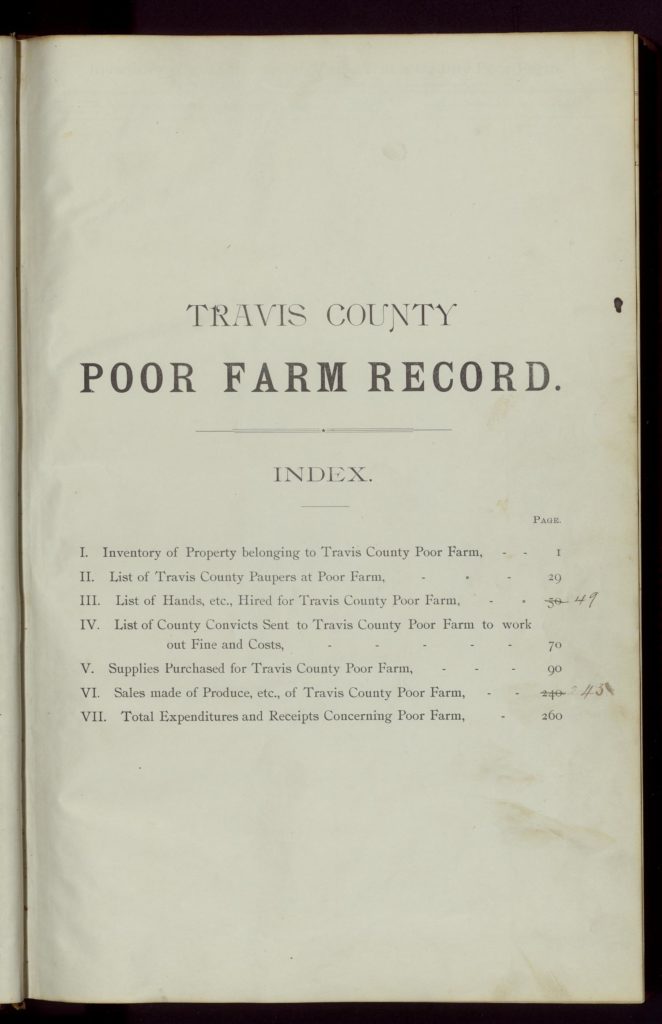Records of the Travis County Poor Farm
Wednesday, July 29th, 2020 in collection highlights, explore Travis County, history of Travis County, Portal to Texas History, research. 1 Comment
In a series of posts, we will be highlighting some of Travis County’s lesser known records and the unique information they contain.
Travis County Poor Farm Record: 1890-1900 (1 volume). Ledger includes an inventory of property belonging to the Travis County Poor Farm; list of paupers; list of hands hired; list of county convicts sent to the poor farm to work out fines and costs; supplies purchased; sales made of produce of the poor farm; and, total expenditures and receipts. Pauper information includes name, date when first entered the poor farm, age, sex, nativity, color, date of discharge and reason for discharge.

The Travis County Poor Farm was established by the Travis County Commissioners Court in 1879. Based on the tradition of the almshouse, the poor farm was a means for destitute inhabitants to live and work in an agrarian-based institutionalized setting. A superintendent ran the operations of the farm; paid a base salary, he was in charge of hiring help, organizing the planting of crops, and keeping written records of all poor farm activity.
Those who came or were sent to poor farms, unless physically disabled, were expected to work the land. The primary purpose of the farming was to provide the inhabitants with food. Provisions supported only a bare existence, and in general, it was the most desperate who populated such facilities. Inhabitants included the elderly and infirm, inmates who were allowed to work off their fines or sentences, and in some cases even families, particularly mothers with small children.
The Travis County Poor Farm was first located seven miles north of Austin, near the intersection of today’s Spicewood Springs and Mopac. Due to growth in the city, around 1908 the poor farm was relocated to near present-day Tarrytown, near the intersection of 24th and Windsor. While no known photographs exist of the poor farm, records indicate that the main building held a kitchen; a storeroom for supplies, groceries, and clothing; a dining room; and quarters for the staff. Outbuildings included cottages for the elderly and infirm, a separate guarded building for inmates, and a large barn.
The onset of the Great Depression and a myriad of federal welfare and relief laws in the 1930s contributed to the decline of the poor farm throughout Texas. Populations at such institutions gradually dropped off as better-funded types of relief were made available. Travis County, rapidly growing and evolving from a rural county to an urban one, discontinued its poor farm in 1936, and portions of the land were auctioned off in 1939.
Click here to view the Poor Farm Record on the Portal to Texas History.
Click here to read more about the locations of the Poor Farm.
Thanks for a very interesting article.